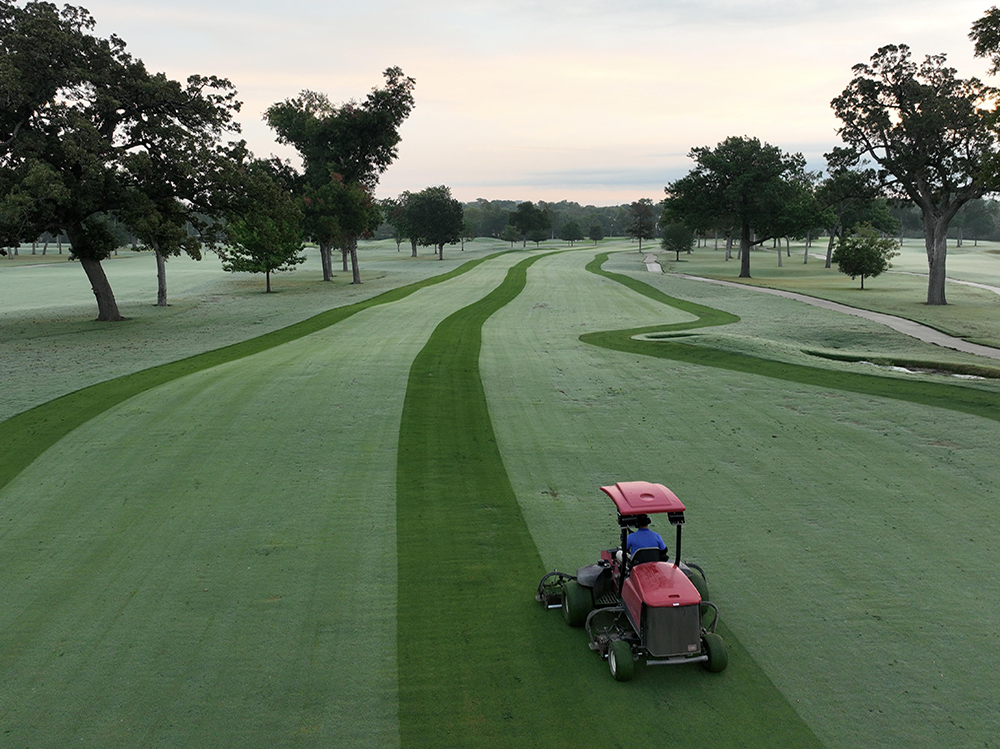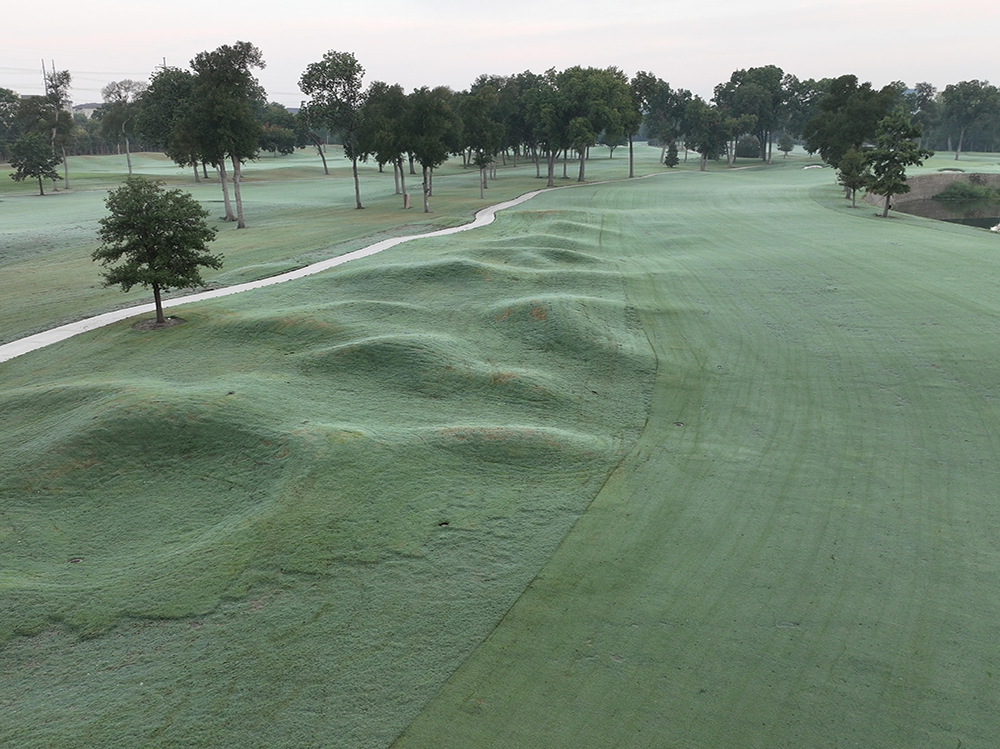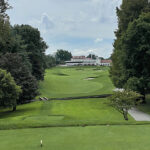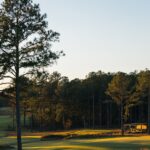About Project
An invitation-only, member-owned,18-hole golf club, Royal Oaks Country Club, Dallas, is a secluded oasis in the heart of the downtown corridor. Originally opened in 1969, the club was in need of an irrigation system upgrade that opened the door to a complete regrassing and a redesign by architect Chet Williams. The older turf was a mix of bermudagrass varieties that Superintendent K.D. Davis, CGCS, likened it to “a calico cat” because of the variations of color and texture. Davis tested bermudagrass varieties for more than four years although, from the start, he felt that Tahoma 31 was the right grass for ROCC.
PROJECT DETAILS
Facility:
Royal Oaks Country Club, Dallas
Date:
July 15 - October 13, 2023
Location:
Dallas, Texas
Sod Producer:
Buena Vista Turf
Fun Facts:
Home course of the world’s top golfer, Scottie Scheffler. Superintendent's dog's name is Roccee, as in Royal Oaks CC
Challenges & Solutions
Challenges:
- Fairways and basins prone to heavy rain events
- North-facing slopes exposed to extreme cold and frost
- For playability, wanted the density of zoysiagrass without the slow recovery of zoysia
- Shade issues caused by many large old-growth trees
- Mix of bermudagrasses caused “calico cat” effect
Solutions:
- Durable Tahoma 31 handled water inundation and silt clean-up
- Cold hardy Tahoma 31 showed little to no signs of frost damage
- Tahoma 31’s density rivals zoysia but with aggressive growth pattern
- NTEP’s #1 bermuda for shade tolerance
- One grass on all surfaces except greens created uniformity of color and flexibility in HOC
Outcome
Prior to the renovation of Royal Oaks Country Club, Dallas, Davis says the idea of planting zoysia instead of bermudagrass “came up often,” but he resisted. A big concern was the recoverability of a zoysiagrass under the conditions at his facility. A golf course superintendent since 2000 who has grown in several golf courses and managed zoysiagrass fairways, his gut told him that zoysia wasn’t the right choice for Royal Oaks, which at the time had “five or six” different types of bermudagrass scattered throughout the property. As superintendent at Royal Oaks since 2015, Davis decided to rely on research rather than gut instinct.
He tested four bermudagrass varieties (Tahoma 31, Celebration, NorthBridge, TifGrand) and one zoysia (Zeon) to see how each performed under the strain of infrequent but significant rain events, cold, and shade. Tahoma 31 was the obvious winner. “Tahoma 31 always seemed to come up to the top, and I put it into the hardest, most challenging areas on the property,” Davis says.
Rain Events & Density
The course is in a floodplain where catch basins hold not just water, but silt. Clean-up after a rain event entails removing the silt and debris carried by the water off of the grass surface.
“We don’t have rain events all the time, but when we do, it’s nice to have a denser variety of bermudagrass. If your grass is really dense, the silt just slides off the top as opposed to an open grass, more like a 419, or even a Celebration that has less density, less plants per square inch. When you’re cleaning it up, it just gets damaged more. Some areas where we’ll get some leaves or some silt accumulate, we’ll spray it off with a hose. And when you’re spraying it off it, it slides off the Tahoma 31. If it’s really dense, it’s kind of like having a shag carpet versus a tighter version. It’s just easier to clean,” Davis says. To test Tahoma 31, “we put it around some of our catch basins where I knew that if we were to have a really bad rain event, we would have to do a lot of washing and a lot of cleaning. And it just stood out as the front runner from day one.”
He continued, “I always felt like Tahoma 31 gives us the density closest to zoysia, but also it has the aggressiveness of bermuda. That’s one reason why we went with Tahoma 31.”
Cold
Dallas gets really hot in the summer and quite cold in the winter. Davis wanted a grass that could not only survive but thrive in both extremes.
“A lot of our tees and our greens are elevated a little bit to make sure they’re up out of the floodplain. The last couple of years we’ve had some cold blasts, and those elevated faces that face north when the wind marches down off the plains north of us, they get hammered with the cold weather. And the Tahoma has, even in my test, you could see where the Tahoma was just about fine with the cold weather compared to anything else around it was severely stunted,” Davis says. “There’s a significant advantage to me having a bermudagrass that is cold hardy as opposed—I mean all bermudagrass for the most part can tolerate the heat.—but the benefit to us was the fact that Tahoma 31 can also tolerate the cold.”
Royal Oaks began grassing in July 2023, sodding 15 acres on slopes. The other 65 acres were installed as sod-to-sprigs. The grand opening was October 13th. Davis says he’s happy he chose Tahoma 31 bermuda over zoysias. On opening day, Tahoma 31 was at an HOC of ¼-nch with plans to be down to .350-inch by next year.
“I want to make sure that everything we do is to give our members the best product available. And I really 100-percent feel that the Tahoma 31 was the right call for us. It’s an aggressively growing bermudagrass. It’s beautiful. It handles the low cut. It’s cold hardy. It’s shade hardy. It stays greener longer in the fall and it greens up a little quicker in the spring. So I think that’s a benefit to anybody,” Davis says. “ It ticks off every box.”









